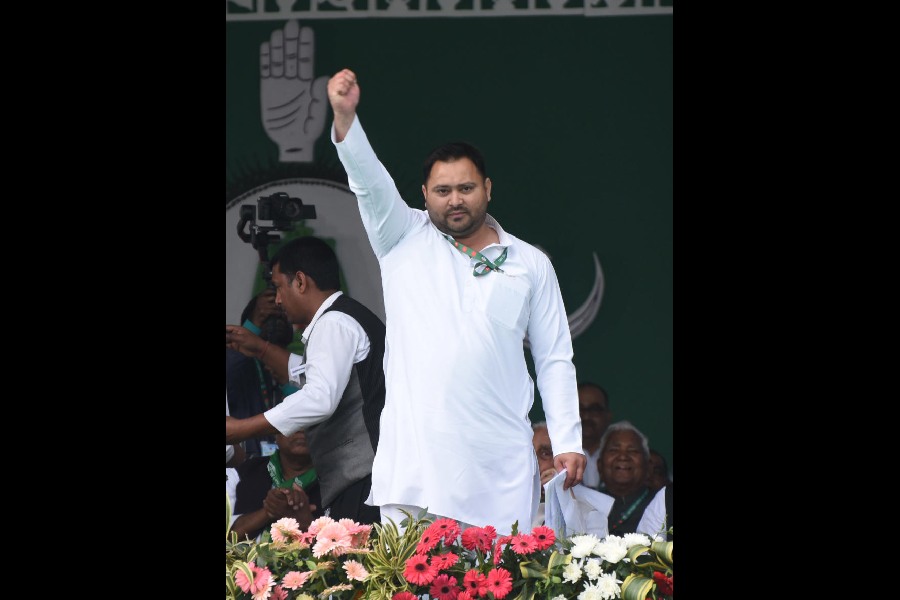Succession dilemma
‘After Modi, who?’ — many in the Bharatiya Janta Party believe that this question is bound to come up in the next five years if Narendra Modi wins a third term as prime minister. As the country gears up for the general elections that will decide whether Modi will be back at the helm, sections of the ruling party are trying to sweep the big question aside. Addressing a recent public rally, the Union defence minister, Rajnath Singh, said that people need to give Modi two more terms to end the problems of unemployment and poverty in the country. This implies that Singh wants Modi to continue as PM till 2034. The Union home minister, Amit Shah, has also made a similar pitch. Since Modi came to power at the Centre in 2014, the saffron party has adopted an unwritten rule that fixes 75 as the retirement age in active politics. Many in the party think that Modi, who is currently 73 years old, will step aside after the end of this third term in 2029 and nominate a successor. But the ministerial duo’s push for two more terms for Modi indicates that he has no plan to hand over the baton in the near future. “Why should he? Modi is fitter than many younger than him and rules can’t be applied to him,” one party leader said. However, many insiders feel that the real reason behind the ministers’ pitches is to nip any succession battle arising within the party in the bud. Interestingly, Amit Shah was long seen as Modi’s successor but now the Uttar Pradesh chief minister, Yogi Adityanath, has also emerged as a strong contender. So the question of Modi’s successor has been put aside for now.
Mysterious gesture
When arriving at any public rally or political programme these days, the Rashtriya Janata Dal leader and former deputy CM of Bihar, Tejashwi Yadav, makes a unique gesture — he raises his hand over his head and swirls it rapidly, as if moving some object like a towel or a rope. The crowds gathered at these events go gaga over the gesture and respond favourably with shrill wolf whistles.

Tejashwi Yadav.
Some of Tejashwi’s supporters say that his gesture reminds them of the sudarshan chakra of Lord Krishna, who was also a member of the Yadav community. Others say that Tejashwi’s gesture signifies a call to swing around his opponents and fling them away into dust. However, the ruling National Democratic Alliance leaders are interpreting the gesticulation as a call to hooliganism to disrupt society with lawlessness. Several theories about Tejashwi’s mysterious gesture are circulating ahead of the Lok Sabha elections, but he is yet to throw a light on it.
Disruptive rallies
Those wearing black clothes, especially sweaters, jackets, mufflers and shawls, faced a predicament during Narendra Modi’s rally at Aurangabad in Bihar recently. The organisers and security personnel had banned black material at the meeting and forced attendees to discard such garments before allowing them entry inside the venue, lest they use them as a symbol of protest. Consequently, several people who left behind their apparel could not find them after the rally was over, leaving them to wonder whether Modi was afraid of the colour black.
This was not the only inconvenience that the people had to face on that day. The rally venue was adjacent to the busy National Highway 2. A stretch of the highway was thus closed to traffic for around three hours due to security reasons, triggering massive traffic congestion. In another case, close to 25 acres of land, comprising wheat and lentil crops, were destroyed to make space for the PM’s rally at Bettiah in the West Champaran district. However, BJP leaders later said that the farmers were compensated for their loss. With the elections around the corner, more such rallies are expected to be organised by political outfits, causing more inconvenience to the masses.
Careful scrutiny
A recent visit by PK Mishra, the principal secretary to the PM, Narendra Modi, to Odisha has generated a buzz about a possible alliance between the BJP and the ruling Biju Janata Dal dispensation in the state. Mishra, who hails from Odisha, visited the Agricultural Monitoring Centre at Krushi Bhawan, the state agriculture and farmers’ empowerment headquarters, and interacted freely with the bureaucrats there. Known for maintaining a low profile, he also visited Puri and assessed the newly developed Parikrama Prakalpa, a peripheral heritage corridor project around the 12th-century Jagannath Temple.
The bureaucrats at AMC were surprised by the detailed information that Mishra sought from them regarding the usage of digital public infrastructure for enhancing the livelihood of the farmers. It was thus clear that Mishra was on a recce and trying to get a feel of the state administration just before PM Modi visited the state on March 5.










